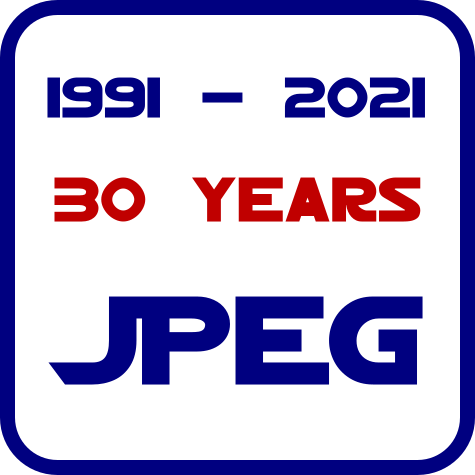On October 07th 1991 the first version of libjpeg, the code library responsible for the success of the JPEG format, was released. What follows is a success story that appears to be unparalleled. The format was supported by more and more applications. A large boost for the spread of JPEG was obtained by the emergence of the World Wide Web: it was presentable in almost all browsers. At present billions of JPEG images are created day-to-day by cameras, server routines, technical surveillance devices, and other applications.
István Sebestyén, one of the original creators of the JPEG format, told that he, as well as many of his colleagues, believed that the potential of classical JPEG was exhausted. Sebestyén: „That’s why we kicked off the JPEG2000 initiative.” The result is known, JPEG2000 remained in a niche and the classical JPEG of the Independent JPEG Group (IJG) had its greatest success story still to come.
Little curiosity in the margin: Google Page Speed today still recommends to choose the format JPEG2000 for the speed-up of web sites. Those who follow this advice will not see their images in the web, however, unless they use the browser Safari (market share below 10%) for surfing the web. No other browser supports this image format, and most image processing applications no longer provide an export to this format.
But where does JPEG stand today? Library developer Guido Vollbeding: „There is much to do, in the support of lossless and efficient arithmetic coding, as well as adopting several important innovations of the library in mainstream applications.” JPEG still has a lot of unused potential, so that one can safely assume to celebrate the 50th and 60th anniversary.
More detailed information about the history of the JPEG format and the library can be found here:
https://jpegclub.org/docs/JPEG_History_30_en.pdf
About Independent JPEG Group (IJG)
IJG is an informal group that writes and distributes a widely used free library for JPEG image compression on a non-profit basis. The first version of this library was released on 7-Oct-1991. After this, many versions of libjpeg were created to make the standard sustainable for future applications. The IJG was headed originally by Thomas Lane and since 2005 by Guido Vollbeding. From 2008 the IJG is part of the Institute for Applied Informatics (InfAI) in Leipzig, where the format is developed further. The reference software of the Independent JPEG Group was a key to the success of the original JPEG standard and has found widespread adoption in applications of image coding. IJG News at: https://jpegclub.org/reference/.
About InfAI
The Institute for Applied Informatics e.V. in Leipzig furthers Science and Research on the fields of Information Technology and Business Informatics. At present over 100 associates conduct research there. The Independent JPEG Group is part of the InfAI and benefits from its know-how. The InfAI provides an excellent network and performed numerous research and industry projects since its establishment in 2006. More information at: https://infai.org/independent-jpeg-group/.
Press contact:
Dr. Lars Göhler, eastpress media (eastpress.de)
Thomasiusstr. 28
04109 Leipzig
Germany
Phone: +49 341 4612787
jpeg@eastpress.de
Project contact Independent JPEG Group at Institute for Applied Informatics
Guido Vollbeding, Institute for Applied Informatics (InfAI, infai.org, ijg.org)
Goerdelerring 9
04109 Leipzig
Germany
Phone: +49 341 2290370
vollbeding@infai.org


Comments are closed, but trackbacks and pingbacks are open.